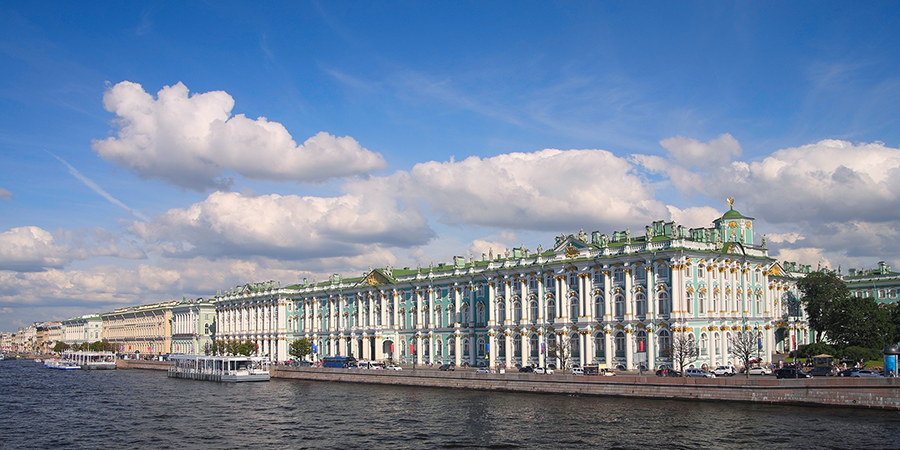It may be the start of the world cup today, but we're not interested in Sergei Nikolayevich Ignashevich or Aleksandr Yuryevich Yerokhin (in the spirit of honesty we will admit having to google the Russian national football team for that reference). What we care about won't be found cavorting around a football pitch over the next three weeks, instead they have to be hunted down and discovered as they hide amongst millions of other artworks, cultural artefacts, archaeological treasures and numismatic objects. Of course, we're talking about the Hermitage in St Petersburg. Where else could you find five buildings filled chockablock with masterpieces that have been squirreled away over the years, starting in 1764 when Catherine the Great first began filling the spectacular Winter Palace with curiosities and antiquities? So here are our top five to spot but be careful, some are easier to scout out than others!
1) Sometimes it seems that the Hermitage might have more money in it than any building on Threadneedle Street, and amongst the 360 thousand examples of European and American currency, there are one or two that will make any keen collectors go green with envy. The jewel in the museum's numismatic crown however has to be its assortment of rare Sasanian coins, which date back to the final days of the Persian Empire.
2) Crouching boy resembles a victim of Pompeii, frozen in time by the pyroclastic flow that erupted forth from Mount Vesuvius in AD 79. What it actually is though is an unfinished piece by legendary Italian master, Michelangelo. This sculpture, carved out of solid marble in around 1524, was never completed and was left to languish in the Medici family's private vaults. Its unrefined nature gives a singular and fascinating insight into the practices of one of the most famous artists ever known.
3) The revolution clock is not included in the exhibits because of its horological uniqueness or ancient antiquity, sitting almost innocuously on a mantelpiece in the Hermitage's white dining room, its hands forever showing the time as 2.10. This is a timepiece is a living chronicle, allowing you to slip through the pages of history to the fateful night of October 26 1918 when the Red Guards stormed the Winter Palace where Tsar Nicholas II and his family were staying. Stealing them away during the hours of darkness, they were held in various makeshift homes before being murdered in Yekaterinburg on July 17 1918. At the exact moment of their forced entry, the Tsar personally and purposefully stopped what has become known as the revolution clock - perhaps the only way he knew to memorialise this significant event in Russian history for future generations.
4) Scythian gold looks as exotic and pirate-esque as it sounds, gleaming yellow bangles, bowls, animals and jewellery boxes of precious metal have been formed into intricate shapes and motifs that you wouldn't have thought possible back in the 7th-3rd centuries BC. Originating in the region today known as modern Kazakhstan, and stretching to the Baltic coasts of Poland and Georgia, Scythian gold was made by predominantly nomadic tribes and most of the Hermitage's examples have been excavated from burial sites in the Crimea, Kuban basin and valleys of the Dnieper and Don rivers.
5) Peter's room is, unsurprisingly, dedicated to the founder of St Petersburg, Peter the Great himself and features his actual throne and footstool, placed tenderly on a dais that just screams sovereignty. It may not be the most visually impressive or aesthetically pleasing exhibit on show at the Hermitage, but when in St Petersburg! The surrounding colonnades, gilded cornices and elaborate frescos add the all-important, and ever so regal, finishing touches.





